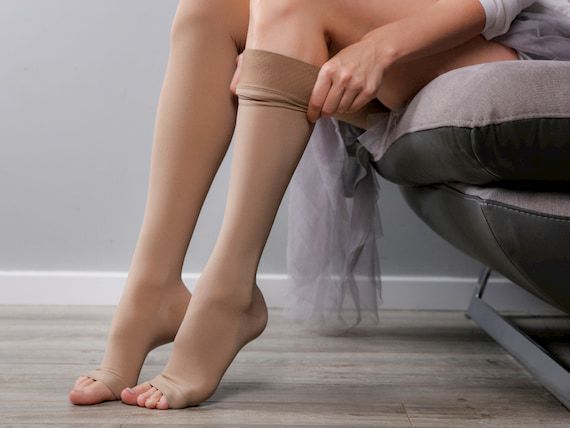
July 23 2020
When it comes to deep vein thrombosis (DVT), many of us think of it as something that affects the older age groups, like people aged 40 and above, but fact is it’s not that uncommon with younger individuals too.

It usually appears when the blood is prevented from normal circulation, and there are various factors that can lead to this: an inherited blood-clotting disorder, vein injury or surgery, long periods of bed rest (because of paralysis or hospital stay), pregnancy, certain pills like oral contraceptives and hormone replacement therapy, cancer (some forms of cancer and some treatments increase risk of blood clotting), and heart failure.
Additional causes are some poor habits like sitting for hours on end when flying or driving, for example, followed by smoking, poor diet choices and lack of exercise which lead to being overweight and obese. Some of the symptoms typical for DVT that you should be aware of are swelling in one leg, warmth, red or darkened skin in the affected area.
When the blood clots break loose and travel through the bloodstream there’s the danger they can get stuck in the lungs, something known as pulmonary embolism (PE); this is manifested through dyspnea (shortness of breath), sharp chest pain and discomfort, dizziness, sudden rapid heart rate, hypoxemia or even blood in the cough.
While it sounds scary with reason, as it can be life threatening when it gets complicated, there are things you can do to lower the risks and prevent the issues.

Created to apply pressure to your legs, so as to assist proper blood flow, the compression socks and stockings are a great solution. If you’re looking for the knee high quality protection, the jobst compression stockings make a valuable purchase since they prevent swelling and discomfort, energising the legs even when you’re having a long flight or drive, thus protecting you from DVT.
For the best fit, look for stockings with features such as breathability guaranteed by the choice of top notch material (e.g. fine cotton blend, bamboo), reinforced toe and heel for durability, and stylish design that goes well with both business and casual outfits.
Same as with choosing to wear the appropriate socks or the jobst stockings specifically, you ought to make smart choices with the attire, especially when travelling because you require utmost comfort.
If you’re a fan of skinny jeans, look for a more comfortable alternative that doesn’t cut off circulation, constricts the legs and waist. Don’t forget to pay attention to the footwear as well, because opting for restrictive shoes and high heels can be equally bad as tight fitted pants in a long trip.
Regardless whether you’re travelling by plane, car, or are working in an office stuck behind a desk, it’s important to keep on moving. When on the plane during long flights, it’s necessary to get up and walk every hour or so. The same goes for when you’re in the car, so regular breaks are recommended if your trip is longer than four hours. When at the desk, take breaks or alternate between sitting and standing every hour.
If there’s no chance for you to get up, at least try to do some exercises with your feet as you sit to prevent ankle swelling. Round and circular motions are most helpful, and so are point and flex exercises.

If you think you’re in danger of DVT, it’s advisable to seek medical help and do the necessary tests so you’d be in the know. People with obesity, pregnant women, women receiving hormonal replacement therapy, cancer and heart patients need this kind of checkup.
In case you’re at risk, the doctor would suggest the best treatment, whether or not you’re safe to use jobst compression stockings, whether long trips are advisable for you, and whether anticoagulation therapy is suitable.
Like it or not, sometimes the solution simply means changing your lifestyle. As difficult as it may be to give up certain habits like binge-eating and smoking, if you want to avoid the risks and consequences of DVT and stay healthy, you ought to start adopting better habits.
Sure, quitting smoking is a challenge but you’d love the sense of accomplishment afterwards and the change in well-being as the result. Making drastic changes with your diet can be equally challenging too, but ditching fast foods and focusing on enriching the meals with plenty of fruits and veggies would help you out with reaching your fitness goals and staying healthy.
For the best outcome, look for the most suitable workout for you. If you find it difficult at the beginning, even walking would be enough for you to reap the benefits of being physically active. Also, remember to stay hydrated since not drinking enough water can be the cause for blood thickening and clotting.